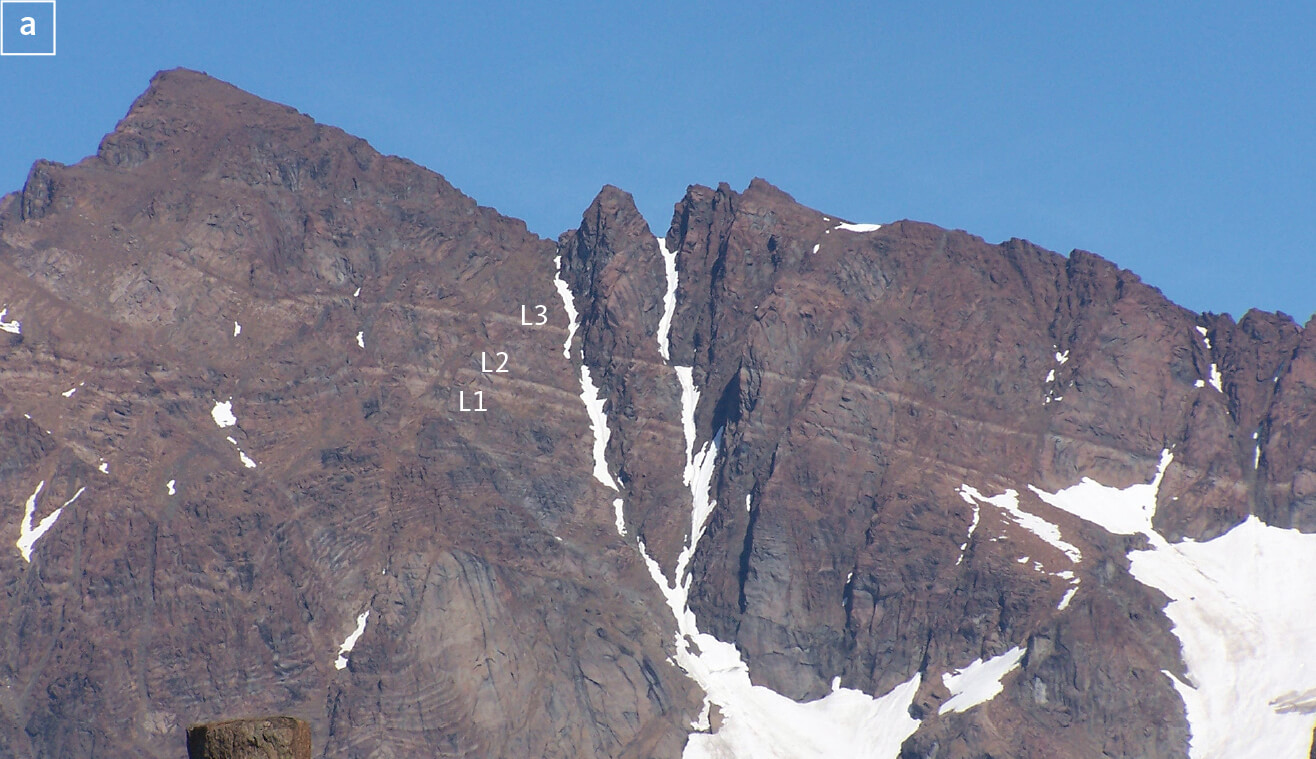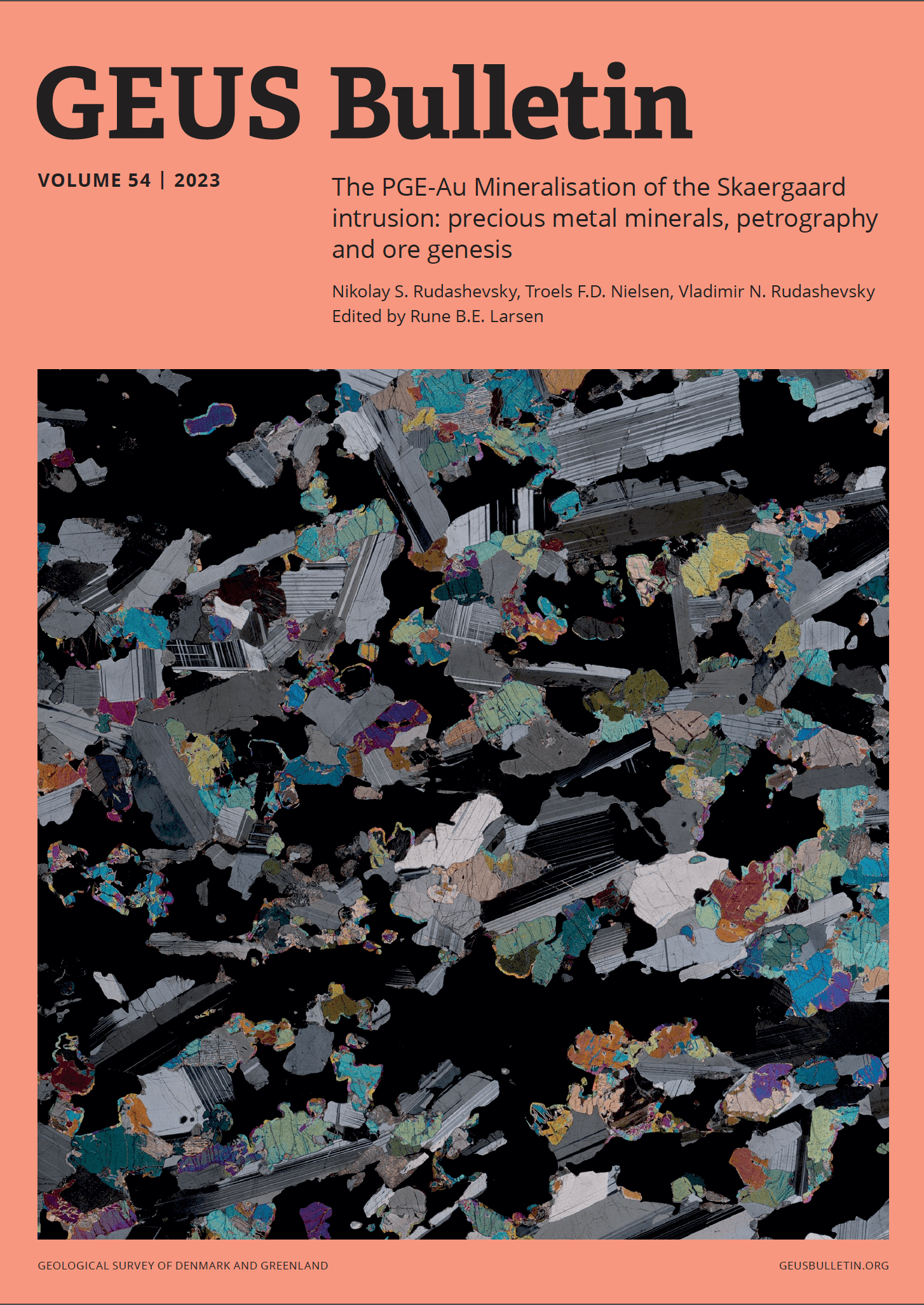
How to Cite
Share
Abstract
In this special issue of GEUS Bulletin, the many riddles regarding the platinum group elements and gold (PGE-Au) mineralisation of the East Greenland Skaergaard intrusion are untangled and discussed. The Skaergard PGE-Au mineralisation, as defined in this study, embodies an enigmatic and rich ore-formation that arguably could have been an economic resource, had it not been for its ice-locked position in central East Greenland.
The authors of this study (Rudashevsky et al. 2023, this volume) characterise the systematic variability in the precious metal mineralogy from the contact towards the interior of the intrusion based on the analysis of more than 4000 individual PGE-Au grains. This variability is interpreted in the light of 90 years of research and over 1000 publications pertaining to magma chamber processes in the Skaergaard intrusion.
With such an impressive library of knowledge, on a comparatively simple magmatic system such as the Skaergard intrusion, we should have discovered a few islands of truth in igneous petrology and ore-deposit formation. And indeed, we have. But we are also enriched with an evolving story, where answering one question only serves to raise three new questions.
This study demonstrates the variability of PGE-Au phases throughout the ore-forming zone of the Skaergaard intrusion. As previously observed, PGE-Au mineralisation in the central parts is divided into several layers over 30–40 m of the cumulus stratigraphy with increasing Pd/Pt ratios upwards, an Au-rich upper part and a low sulphide content throughout all layers. Close to the contact the precious metal zonation is less pronounced, and it is significantly more sulphide rich. The PGE mineralogy deviates significantly from the centre to the margin. These complex lateral and vertical variations cannot be explained by one genetic model but require an intricate combination of igneous processes including silicate-melt liquid immiscibility, sulphide-melt immiscibility, sulphide-melt resorptions, precious metal transport by volatile-rich fluids and, finally, the solidification rate of the cumulus mushes.
For other well-preserved PGE-Au deposits throughout the world, we observe a great variation of ore-forming models. Remarkably, most of these models may be applied to various parts of the Skaergaard mineralisation. The authors suggest that the Skaergaard intrusion preserves different steps in PGE-Au ore-genesis which, in many other intrusions are obliterated by later igneous events. Therefore, the legacy of the Skaergaard mineralisation is the preservation of igneous ore-forming events that may also precede the genesis of other PGE-Au deposits in the world.
After the last conclusion, I guarantee that you will be confused and perhaps a bit triggered but hopefully also inspired and bursting with new questions on the genesis of PGE-Au deposits in mafic and ultramafic igneous complexes. In light of the recent study, you may even be encouraged to look at your favourite PGE-Au deposit with fresh eyes.
This study beautifully demonstrates that turning the next page in the book of magma chamber processes is more important than seeing ‘The End’.
How to Cite
Share
Copyright (c) 2023 Rune Berg-Edland Larsen

This work is licensed under a Creative Commons Attribution 4.0 International License.
Funding
None declaredDownloads
Guest Editor: Rune B.E. Larsen, NTNU, Norway
The Skaergaard PGE-Au Mineralisation, alias the Platinova Reef, is hosted in a series of mineralisation levels within a suite of bowl-shaped macrorhythmic layers in the upper Middle Zone of the Skaergaard intrusion. The intrusion is exposed 68°N in East Greenland. The occurrence defines its [...]
References
- Rudashevsky, N.S., Nielsen, T.F.D. & Rudashevsky, V.N. 2023: The PGE-Au mineralisation of the Skaergaard intrusion: precious metal minerals, petrography and ore genesis. GEUS Bulletin 54 (this volume), 8306. https://doi.org/10.34194/geusb.v54.8306









